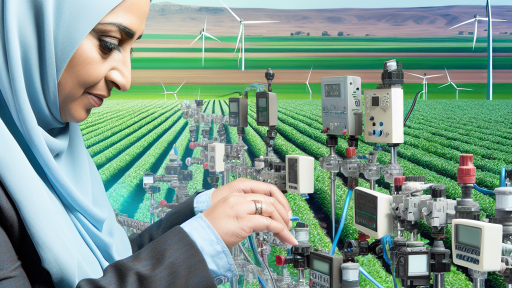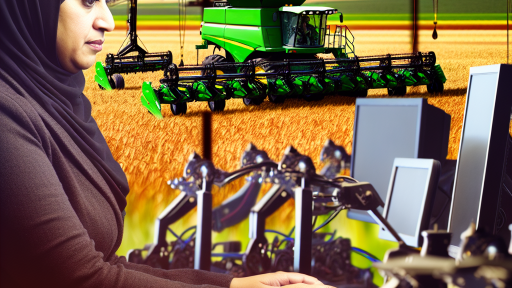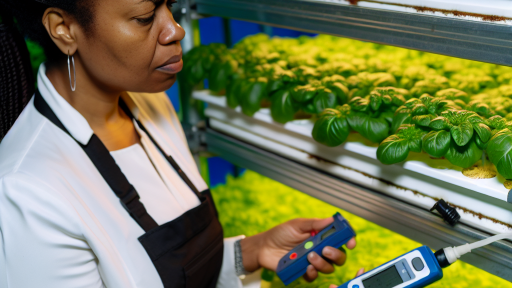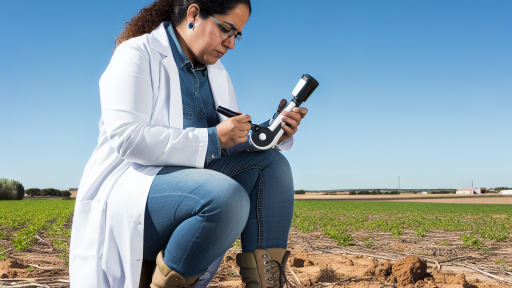Introduction to Automated Machinery in Agriculture and Its Role in Pest Control
Advancements in Agricultural Technology
The agriculture industry benefits significantly from technological innovations.
Automated machinery offers efficient solutions to various farming challenges.
Moreover, these advancements enhance productivity and crop quality.
Understanding Pest Control Needs
Pest control is crucial for protecting crops from damage.
Farmers face significant losses due to pest infestations annually.
Consequently, effective and sustainable pest management strategies are vital.
Automation’s Contribution to Pest Control
Automated machinery plays a pivotal role in pest control strategies.
These machines can accurately identify and target pests in real-time.
Therefore, they minimize the use of chemical pesticides.
Furthermore, automation enables precise application of pest control measures.
Types of Automated Machinery Used
- Robotic sprayers for targeted pesticide application
- Drones for aerial monitoring and mapping
- Automated traps for real-time pest tracking
- Sensor-equipped equipment for pest detection
Benefits of Using Automated Machinery
Automated machinery enhances efficiency in pest control operations.
It reduces labor costs and minimizes human exposure to pesticides.
In addition, automation leads to more consistent and effective applications.
This innovative approach supports sustainable agricultural practices.
Overview of Different Types of Automated Machinery Used for Pest Management
Introduction to Automated Machinery
Automated machinery transforms pest control practices significantly.
Transform Your Agribusiness
Unlock your farm's potential with expert advice tailored to your needs. Get actionable steps that drive real results.
Get StartedThis technology enhances precision and efficiency in pest management.
As a result, farmers and landowners can apply treatments effectively.
Types of Automated Pest Control Machinery
Several types of automated machinery aid in pest management.
Each type offers unique benefits and applications in agriculture.
Robotic Sprayers
Robotic sprayers provide targeted pesticide application.
They reduce chemical waste and lower environmental impact.
These devices operate autonomously, reacting to real-time data.
Drones
Drones play a crucial role in modern pest control.
They monitor crop health and identify pest infestations quickly.
Equipped with advanced imaging technology, they enhance precision.
Traps and Monitoring Systems
Smart traps incorporate sensors to detect pests automatically.
These systems provide alerts to farmers for immediate action.
Consequently, they reduce the reliance on preventive treatments.
Benefits of Automated Pest Management
Automated machinery optimizes pest management strategies.
It minimizes costs associated with manual labor and chemicals.
Moreover, it supports sustainable farming practices.
Future of Automated Pest Control
The future of pest control lies in innovation and adaptation.
Emerging technologies will continue to shape these practices.
As a result, automated systems will play a more significant role.
Advantages of Using Automated Machinery for Pest Control
Efficiency in Operations
Automated machinery significantly improves the efficiency of pest control operations.
These machines apply treatments quickly over large areas.
Consequently, they reduce the time spent on pest management.
Moreover, automation minimizes the need for manual labor.
This efficiency leads to a quicker response to pest infestations.
Showcase Your Farming Business
Publish your professional farming services profile on our blog for a one-time fee of $200 and reach a dedicated audience of farmers and agribusiness owners.
Publish Your ProfileFarmers can adjust treatments based on real-time data.
Ultimately, automation helps in optimizing resources and reducing waste.
Sustainable Practices
Automated machinery supports sustainable pest control practices.
It allows for targeted application of pesticides.
This reduces the overall chemical usage in agriculture.
Additionally, less chemical runoff leads to healthier ecosystems.
By using precision technology, farmers can protect beneficial insects.
Furthermore, automation lessens the impact on non-target species.
These sustainable practices contribute to improved soil health.
Cost-Effectiveness
Investing in automated pest control machinery is cost-effective.
Though initial costs can be high, long-term savings are substantial.
Reduced labor costs and lower pesticide use contribute to savings.
Farmers benefit from increased crop yields due to effective pest management.
Moreover, automated systems require less maintenance than manual methods.
This further reduces overhead costs over time.
Data-Driven Decisions
Automated machinery enables data collection for informed decision-making.
Farmers can analyze pest populations and treatment effectiveness.
This data-driven approach fosters timely interventions.
As a result, farmers can adapt strategies based on specific pest behavior.
Additionally, it helps in forecasting potential pest outbreaks.
Consequently, this leads to better planning and resource allocation.
Ultimately, data-driven decisions enhance overall crop management.
Delve into the Subject: Integrating Robotics Into Traditional Farming
Case Studies: Successful Implementation of Automated Pest Control Technologies
Agricultural Robotics in Action
Several farms have embraced agricultural robotics to combat pests effectively.
For instance, Harvest Innovations implemented a robotic sprayer last season.
This system uses precise targeting to minimize chemical usage.
As a result, they observed a 30% reduction in pesticide costs.
Drone Technology for Monitoring
Drones have proven invaluable in pest monitoring and analysis.
FieldTech Solutions utilizes drones equipped with infrared cameras.
These drones assess crop health and detect pest outbreaks early.
Consequently, farmers can respond quickly and efficiently.
Case Study: Green Valley Farms
Green Valley Farms adopted automated traps to manage rodent populations.
These traps use sensors to capture data about rodent activity.
Moreover, they send alerts directly to farm managers.
This proactive approach reduced rodent-related damage significantly.
Integration into Existing Systems
Successful implementation requires integrating new technologies smoothly.
FarmTech Industries shared their experience with integration challenges.
They focused on staff training and proper equipment calibration.
Such measures facilitated a seamless transition to automated systems.
Feedback and Adjustments
The role of farmer feedback is crucial for improving technology usability.
Showcase Your Farming Business
Publish your professional farming services profile on our blog for a one-time fee of $200 and reach a dedicated audience of farmers and agribusiness owners.
Publish Your ProfileFor example, feedback from Riverside Orchards led to software updates.
These updates enhanced the usability of their automated monitoring systems.
As a result, user satisfaction increased significantly.
Future Trends in Automated Pest Control
Looking ahead, more advancements are on the horizon for automated pest control.
Experts predict the integration of artificial intelligence and machine learning.
Such technologies will enhance precision in pest control solutions.
Farmers can expect greater efficiency and effectiveness in pest management.
You Might Also Like: Efficient Irrigation Solutions by Agri Services International in Lake Wales
Challenges and Limitations of Automated Machinery in Pest Control
High Initial Costs
Automated machinery often requires significant upfront investment.
This financial barrier can deter many farmers from adopting technology.
Over time, costs may decrease, but initial expenses remain daunting.
Technical Expertise Requirement
Operating automated systems demands technical know-how.
Farmers may struggle to learn new technologies without proper training.
This knowledge gap can limit effective usage of machinery.
Dependence on Technology
Increased reliance on automated machinery can be risky.
Malfunctions or technical failures may disrupt pest control efforts.
Moreover, heavy dependence might reduce traditional farming skills.
Environmental Concerns
Automated pest control machinery can produce unintended environmental impacts.
Excessive use of pesticides through automation may harm beneficial insects.
This issue can disturb local ecosystems and disrupt biodiversity.
Limited Adaptability
Automated systems may lack flexibility for different farming environments.
Crop varieties and pest species can vary widely across regions.
This limitation may undermine the effectiveness of automated solutions.
Maintenance and Upkeep Challenges
Maintaining automated machinery can be complex and time-consuming.
Regular maintenance is necessary to ensure optimal performance.
Consequently, farmers may need to allocate additional resources and time.
Uncover the Details: Automated Machinery for Planting and Harvesting
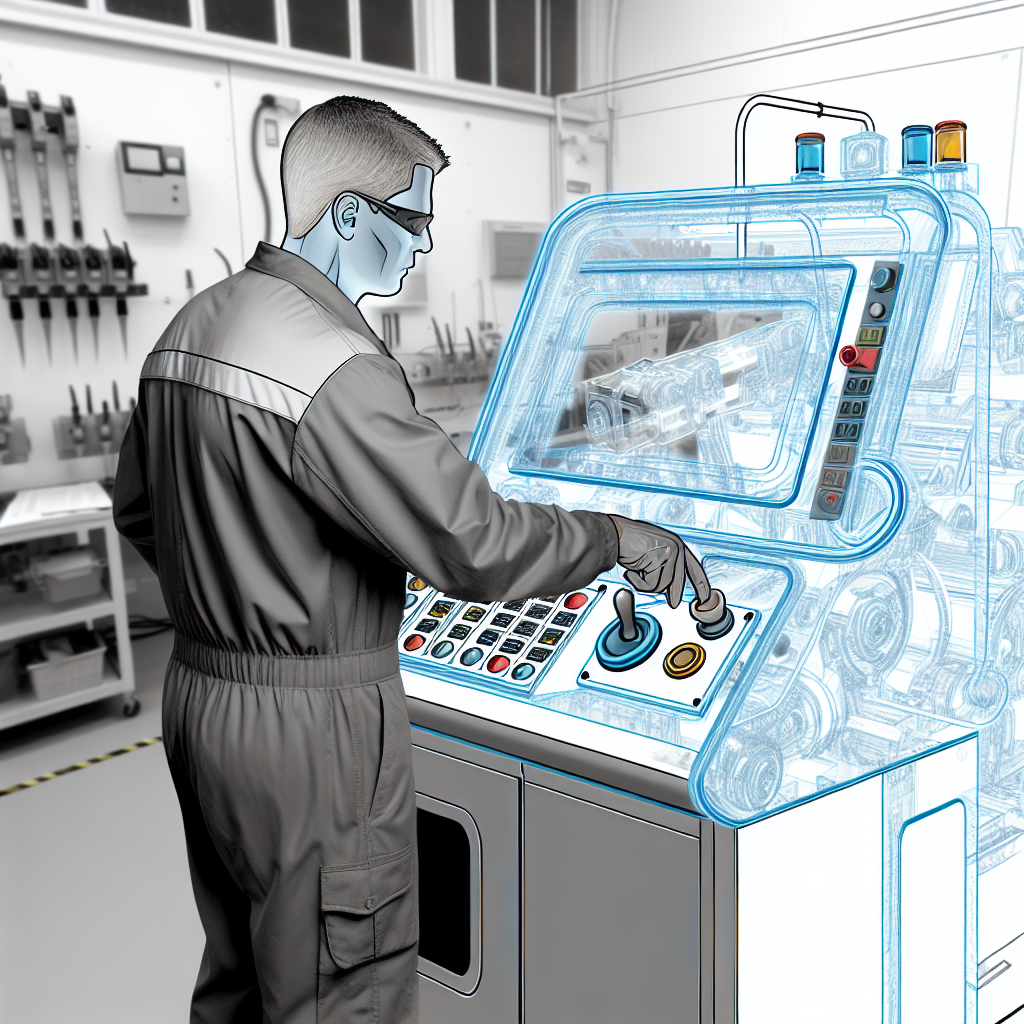
Comparative Analysis: Automated Machinery vs. Traditional Pest Control Methods
Overview of Pest Control Methods
Pest control is essential for agricultural success.
Farmers rely on various methods to manage pests.
Traditional methods include chemical pesticides and manual labor.
Automated machinery is becoming increasingly popular.
Efficiency of Automated Machinery
Automated machinery can operate continuously, ensuring thorough coverage.
It allows for precise targeting of pests, reducing chemical use.
This technology minimizes human error and increases speed.
Farmers can monitor pest levels in real time using sensors.
Environmental Impact
Traditional pest control methods often harm beneficial organisms.
Chemicals can contaminate soil and water sources.
Automated systems typically use fewer harmful substances.
This shift supports healthier ecosystems and contributes to sustainability.
Cost Considerations
Initial investment in automated machinery can be high.
Showcase Your Farming Business
Publish your professional farming services profile on our blog for a one-time fee of $200 and reach a dedicated audience of farmers and agribusiness owners.
Publish Your ProfileHowever, it often leads to long-term savings in labor and input costs.
Conversely, traditional methods may require ongoing chemical purchases.
Many farmers find automated solutions more cost-effective over time.
Labor Requirements
Automated machinery reduces the need for manual labor.
This shift is crucial in areas facing labor shortages.
Additionally, it allows workers to focus on higher-level tasks.
Thus, technology enhances overall farm efficiency.
Impact on Crop Yield
Research shows that automation can lead to higher crop yields.
By controlling pests accurately, farmers can protect their harvests.
In contrast, traditional methods sometimes lead to inconsistent results.
Automated systems help maintain crop quality and reduce loss.
Potential Advancements in Pest Control Technology
The future of pest control technology is promising.
As innovations arise, efficiency will increase even further.
Farmers must keep pace with these developments.
Adopting new technologies will ensure competitiveness and sustainability.
Find Out More: Leveraging Data to Improve Harvest Efficiency
Future Trends in Automated Pest Management
Technological Innovations Driving Change
Innovative technologies are transforming pest management practices.
Automation now plays a pivotal role in agricultural settings.
For instance, robotic systems are increasingly deployed for pest monitoring.
These robots utilize advanced sensors and AI algorithms.
Consequently, they enhance the accuracy of pest detection.
Integration of Artificial Intelligence
Artificial intelligence enhances the efficiency of pest control strategies.
Machine learning algorithms analyze pest behavior patterns.
This analysis allows for predictive modeling in pest outbreaks.
As a result, farmers can implement proactive measures.
Additionally, AI-driven systems can adjust strategies in real-time.
Drone Technology in Pest Management
Drones offer valuable aerial insights into pest infestations.
Farmers can map out affected areas quickly and precisely.
This technology also aids in targeted pesticide application.
Thus, it minimizes chemical use and environmental impact.
Biological Control Methods
Integrating biological controls is a rising trend in pest management.
Farmers increasingly deploy natural predators to manage pest populations.
For example, ladybugs effectively control aphid infestations.
This method promotes a balanced ecosystem in agricultural settings.
Data-Driven Decision Making
Data analytics now informs pest control strategies.
Real-time data collection enhances understanding of pest dynamics.
Farmers access vital information through cloud-based platforms.
This access allows them to make informed management decisions.
Future Research Directions
Research in automated pest management continues to expand.
Scientists are exploring genetic pest management approaches.
Showcase Your Farming Business
Publish your professional farming services profile on our blog for a one-time fee of $200 and reach a dedicated audience of farmers and agribusiness owners.
Publish Your ProfileThese approaches could drastically reduce pest populations.
Moreover, interdisciplinary collaboration is essential for innovation.
This collaboration merges technology, biology, and environmental science.
Best Practices for Integrating Automated Machinery into Existing Pest Control Strategies
Assessing Current Practices
Start by evaluating your current pest control methods.
This assessment helps identify areas needing improvement.
Consider the types of pests you encounter regularly.
Document the tools and techniques already in use.
This step lays a solid foundation for integration.
Choosing the Right Technology
Select automated machinery that aligns with your needs.
Research different models and manufacturers.
Focus on reliability and ease of use.
Consult with industry experts for recommendations.
This ensures you make informed choices.
Integration with Existing Systems
Plan how to integrate new machinery into your current workflow.
Ensure compatibility with existing tools and pesticides.
This step minimizes disruptions during implementation.
Provide training for your team on new equipment.
Effective training boosts confidence and efficiency.
Monitoring and Evaluation
Implement a system to monitor the effectiveness of automated machinery.
Gather data on pest populations and equipment performance.
Adjust your strategies based on the data collected.
This continuous improvement cycle enhances results.
Regular feedback encourages ongoing development.
Environmental Considerations
Prioritize eco-friendly automated pest control solutions.
Choose machinery designed to minimize chemical use.
Evaluate the environmental impact of your methods.
This approach aligns with sustainable practices.
Conservation efforts support long-term productivity.
Staying Informed
Keep abreast of technological advancements in pest control.
Attend industry conferences and workshops regularly.
Join online forums to exchange knowledge with peers.
Staying informed fosters innovation in your practices.
This helps maintain a competitive edge in the industry.
Additional Resources
Precision Agriculture: Benefits and Challenges for Technology …

